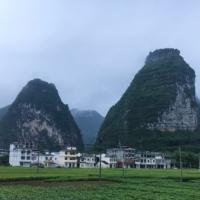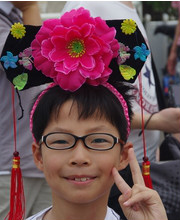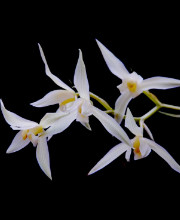| 图片: | |
|---|---|
| 名称: | |
| 描述: | |
- 胃粘膜下肿块,炎性纤维性息肉?
-
panyl10055 离线
- 帖子:258
- 粉蓝豆:857
- 经验:1331
- 注册时间:2008-08-12
- 加关注 | 发消息
| 性别 | 男 | 年龄 | 68 | 临床诊断 | 间质瘤 |
|---|---|---|---|---|---|
| 一般病史 | 胃粘膜下肿块 | ||||
| 标本名称 | 胃部分切除标本 | ||||
| 大体所见 | 粘膜下肿块2*1.8cm,界清,灰白色 | ||||
相关帖子
刚好我今天也有一例,跟此例类似,只是免疫组化,s100是弥漫阳性,cd117及dg1均阴性,cd34阳性, 其他均阴性。请教各位,这种情况怎么判呢

- 坚持不懈,努力
-
benben520sps 离线
- 帖子:1045
- 粉蓝豆:568
- 经验:1254
- 注册时间:2009-07-28
- 加关注 | 发消息
-
benben520sps 离线
- 帖子:1045
- 粉蓝豆:568
- 经验:1254
- 注册时间:2009-07-28
- 加关注 | 发消息
INFLAMMATORY FIBROID POLYP
Clinical Features
Inflammatory fibroid polyps are mesenchymal proliferations composed of a mixture of stromal spindle cells, small blood vessels, and inflammatory cells, particularly eosinophils.[190–192] They may occur anywhere in the GI tract but are most common in the stomach and small intestine. In the stomach, inflammatory fibroid polyps usually occur in the sixth decade of life. Recent studies have reported a disproportionately large number of gastric inflammatory fibroid polyps in female patients.[193], [194] Some have suggested an infectious etiology for inflammatory fibroid polyps.[191], [192] However, no causative agent has ever been identified[195]; thus, most observers currently consider inflammatory fibroid polyps to be a form of reactive pseudotumor. When small, these tumors may be discovered incidentally at endoscopy. However, large lesions may cause obstructive symptoms such as nausea, vomiting, and abdominal pain. In some cases, inflammatory fibroid polyps may contain a long stalk; these may prolapse through the pyloric sphincter and cause obstruction.[196] Some studies suggest that inflammatory fibroid polyps are more common among patients with atrophic gastritis and pernicious anemia.
Pathologic Features
Inflammatory fibroid polyps are typically small, wellcircumscribed, submucosally based, sessile lesions that may show ulceration of the overlying mucosa. Their median size is 1.5cm, and, although most lesions are smaller than 3cm in diameter, polyps that measure as large as 5cm in diameter have been reported. In the stomach, they most commonly arise in the antrum, immediately proximal to, or overlying, the pyloric sphincter.
Microscopically, inflammatory fibroid polyps are submucosal tumors and often show an abrupt demarcation at the level of the muscularis propria. Mucosal involvement is common with gastric lesions. However, unlike small intestinal lesions, involvement of the muscularis propria is unusual in gastric polyps. Extension of the tumor into the mucosa causes separation of gastric glands, which results in a disordered and atrophic appearance. Inflammatory fibroid polyps are composed of a loose mixture of spindle-shaped, plump, cytologically bland stromal cells, inflammatory cells, and small, thin-walled blood vessels in an edematous or myxoid background (Fig. 17-21). In the stomach, stromal cells often proliferate in a concentric fashion around small and medium-sized blood vessels.[197], [198] Mitotic figures are rare but may occasionally be present in deeper portions of the lesion. Atypical mitoses are never present. Eosinophils are a prominent inflammatory component and may also encircle vessels. Larger lesions may show collagen deposition and smooth muscle proliferation, or even giant cell formation.
Immunohistochemically, stromal cells have been reported to be positive for vimentin, CD34, fascin, CD35, cyclin D1, and calponin.[194,197–201] A smaller proportion are also positive for smooth muscle actin, HHF-35, KP-1, and Mac-387.[194,197–201] In contrast to stromal tumors of the GI tract, stromal cells in inflammatory fibroid polyps are negative for CD117 (c-kit).[194], [197] Although the histogenesis of inflammatory fibroid polyps remains controversial, a possible origin in dendritic cells or CD34-positive perivascular cells has been proposed.[194], [201] Differentiating between inflammatory fibroid polyps and inflammatory myofibroblastic tumors is discussed next.
认真学习了一下,谢谢老师

- 你的潜力埋藏在你的心灵深处,当你发现它时,它会发出万丈光芒。














































































